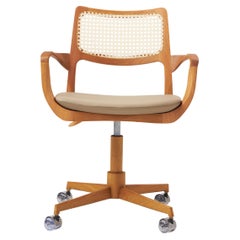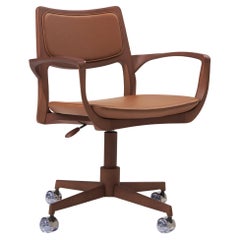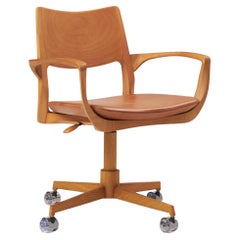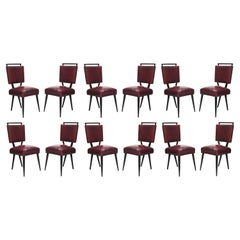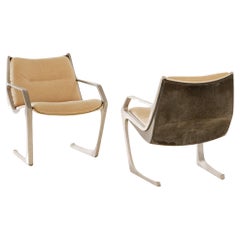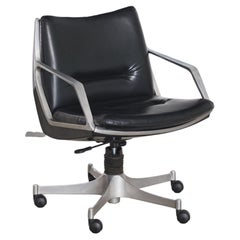South America - Office Chairs and Desk Chairs
2010s Brazilian Post-Modern South America - Office Chairs and Desk Chairs
Leather, Textile, Upholstery, Faux Leather, Cane, Hardwood, Walnut
2010s Brazilian Post-Modern South America - Office Chairs and Desk Chairs
Leather, Textile, Upholstery, Faux Leather, Cane, Hardwood, Walnut
2010s Brazilian Post-Modern South America - Office Chairs and Desk Chairs
Leather, Textile, Upholstery, Faux Leather, Cane, Hardwood, Walnut
1950s Italian Mid-Century Modern Vintage South America - Office Chairs and Desk Chairs
Leather, Wood
Mid-20th Century Brazilian Mid-Century Modern South America - Office Chairs and Desk Chairs
Aluminum
1970s Brazilian Mid-Century Modern Vintage South America - Office Chairs and Desk Chairs
Aluminum
1960s Brazilian Mid-Century Modern Vintage South America - Office Chairs and Desk Chairs
Leather, Plastic
2010s Brazilian Post-Modern South America - Office Chairs and Desk Chairs
Leather, Textile, Upholstery, Faux Leather, Cane, Hardwood, Walnut
1970s Brazilian Mid-Century Modern Vintage South America - Office Chairs and Desk Chairs
Aluminum
1930s French Art Deco Vintage South America - Office Chairs and Desk Chairs
Leather, Wood
1930s Argentine Art Deco Vintage South America - Office Chairs and Desk Chairs
Iron
Mid-20th Century Brazilian Mid-Century Modern South America - Office Chairs and Desk Chairs
Metal
1950s Brazilian Mid-Century Modern Vintage South America - Office Chairs and Desk Chairs
Leather, Wood
1970s Brazilian Mid-Century Modern Vintage South America - Office Chairs and Desk Chairs
Aluminum, Chrome
Mid-20th Century Brazilian Mid-Century Modern South America - Office Chairs and Desk Chairs
Steel
1960s Italian Mid-Century Modern Vintage South America - Office Chairs and Desk Chairs
Chrome
1940s German Bauhaus Vintage South America - Office Chairs and Desk Chairs
Chrome
1950s American Mid-Century Modern Vintage South America - Office Chairs and Desk Chairs
Wood
1950s Danish Mid-Century Modern Vintage South America - Office Chairs and Desk Chairs
Leather, Wood
1940s American Space Age Vintage South America - Office Chairs and Desk Chairs
Lucite
1940s German Bauhaus Vintage South America - Office Chairs and Desk Chairs
Chrome
2010s Brazilian Post-Modern South America - Office Chairs and Desk Chairs
Leather, Textile, Upholstery, Faux Leather, Cane, Hardwood, Walnut
1950s Brazilian Mid-Century Modern Vintage South America - Office Chairs and Desk Chairs
Iron
1950s Brazilian Mid-Century Modern Vintage South America - Office Chairs and Desk Chairs
Metal
1930s French Art Deco Vintage South America - Office Chairs and Desk Chairs
Wood
1970s American Art Deco Vintage South America - Office Chairs and Desk Chairs
Chrome
1920s French Art Deco Vintage South America - Office Chairs and Desk Chairs
Wood
1930s French Art Deco Vintage South America - Office Chairs and Desk Chairs
Wood, Leather
1930s German Art Deco Vintage South America - Office Chairs and Desk Chairs
Leather, Wood
1920s French Art Deco Vintage South America - Office Chairs and Desk Chairs
Iron, Gold Leaf
1920s Italian Space Age Vintage South America - Office Chairs and Desk Chairs
Wood
Read More
Ask an Interior Designer: Work-from-Home Edition
Leaping into a design project, whether it's refreshing the bedroom or redoing the whole house, can be overwhelming. Luckily, we know more than a few interior designers. You asked questions on Instagram, and now they're answering.
18 Home Offices for Workaholic Design-Lovers
Proof that working from home is a perk.
